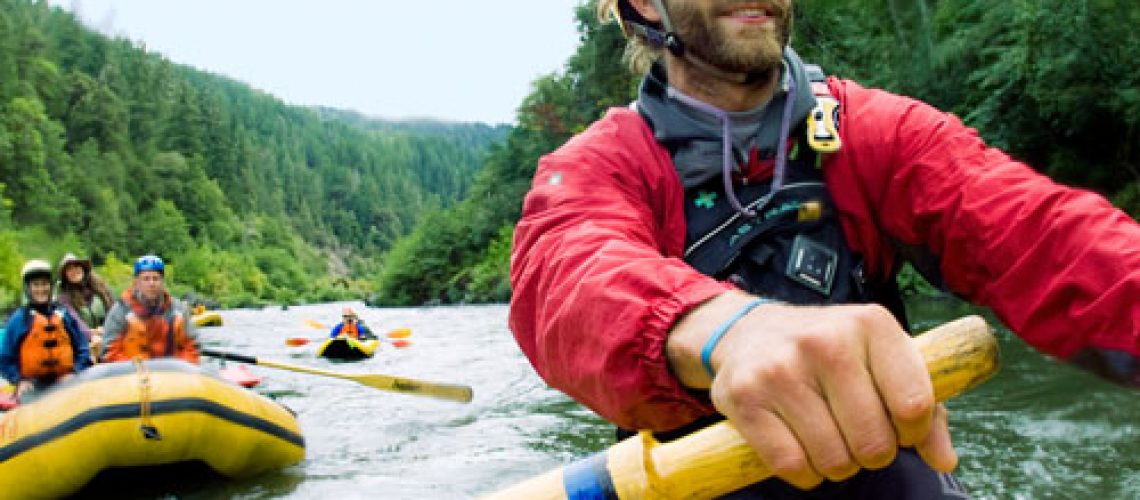When you’re traveling through whitewater rapids on a raging river, you don’t have time to wonder what your river guide means when he says, “Watch out for that hole!” At Imperial River Company, our friendly guides will make sure you know these rafting terms before you push off, but it doesn’t hurt to get ahead of the class. Before you take off on your first Deschutes River rafting trip, familiarize yourself with the key phrases you’ll need to know.
Visual Hand Signals
Because intense whitewater is often loud, most river guides use hand signals along with their voice commands to direct the rafting team safely through the water. These include:
- Pointing Positive: Every now and then someone finds themselves dumped overboard. In these cases, your river guide will attempt to point you in the right direction, so you can swim to safety. In order to make sure nobody gets confused, they never point negative. For example, they would never point at a rock in the river and say, “Watch out for that rock!” because you might not be able to hear them and interpret their pointing as where you should go. The rule on the river is to always point positive, which means point in the direction you want the person or team to go.
- Are you OK? Yes, I’m OK: If the current is gentle enough, many rafters like to take a dip along the way. In these cases, it’s important to reassure passing guides that you aren’t in any danger. To check, they’ll lightly tap the top of their head. To respond, swimmers should tap the top of their head as well. These hand signals translate simply as, “Are you OK?” and “Yes, I’m OK.” Therefore signaling to those in the area that you’re not in any danger.
Important River Terminology
During your pre-trip training and throughout the rafting trip, your guide will be using terms specific to rivers and the sport of rafting. You’ll catch on quicker if you know some of the most important river terminology, like:
- CFS: River guides need to pay attention to what the water is doing all the time. This helps them prepare their team to take each rapid in the best possible way. One aspect they watch for is how fast the river is moving. They measure this in cubic feet per second, or CFS for short.
- Eddy: If you’re on the Deschutes River, then you can enjoy a lot of great rapids, but there are plenty of places to take a break along the way if needed. You can take this kind of respite in an eddy, which is a place along the side of the river or behind a boulder where the current flows upstream.
- Hole: While paddling with your rafting team, you’ll need to be on the lookout for water hazards like holes. A hole is created when water flows over a shelf or rock and recirculates within that pocket. If a raft were to venture into one of these, they could get stuck or flip.
- Line: Your guide is in charge of finding and leading you through the best possible route down the river. When they spot a path like this, it’s called a line.
- Wave Train: The rapids of the lower Deschutes River are as diverse as they are exciting. Some are short and quick while others keep your adrenaline pumping for a few minutes. When there are 3 or more waves in a row within a set of rapids, they’re called a wave train. These are fun spots where rafters feel like they’re on a roller coaster.
Now that you know the lingo, why not learn the sport for yourself. Head on out to Maupin and book a whitewater rafting trip on the Deschutes River. The guides at Imperial River Company will be impressed with your river term repertoire!
